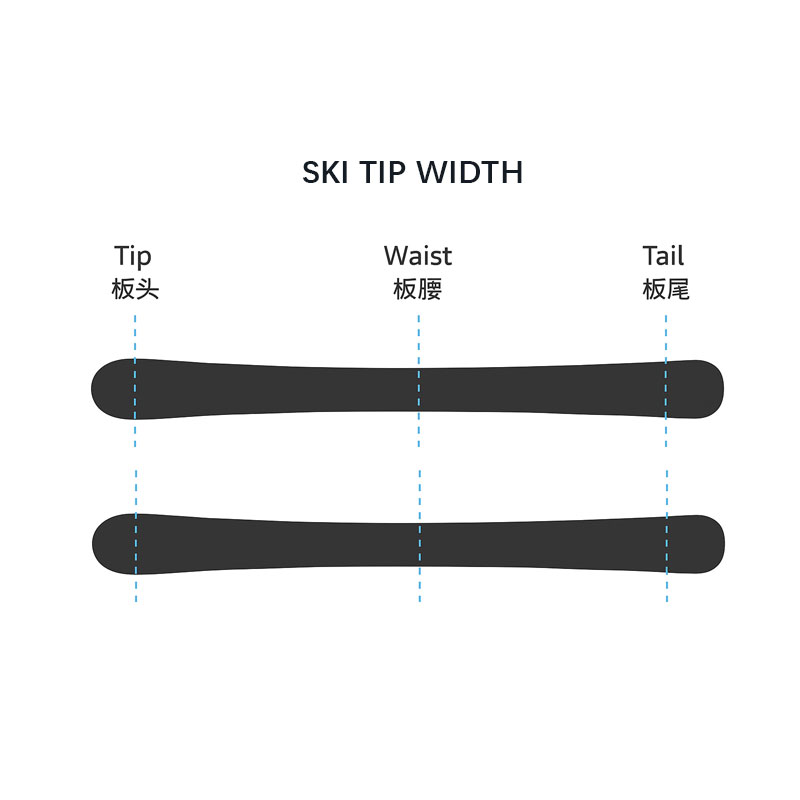
Described in the direction of travel, the front of the ski, typically pointed or rounded, is the tip, the middle is the waist and the rear is the tail.
Skis have four aspects that define their basic performance: length, width, sidecut and camber. Skis also differ in more minor ways to address certain niche roles.
For instance, skis for moguls are much softer to absorb shocks from the quick and sharp turns of the moguls and skis for powder are much wider to provide more "float" in deeper, softer snow.
Tips and tails
The tip of the ski often strikes the snow and is normally curled upward in order to ride over it. Tips were pointed for much of the history of skiing,
but the introduction of wider shaped skis has led to a change to more rounded shapes.
Tails were, and often remain, straight cut. For freestyle skiing, where the skier is often skiing backwards,
it is common to have a "twin-tip" design with the tail of the ski rounded and curled up like the nose so that it skis the same in both directions.
From Wikipedia https://en.wikipedia.org/wiki/Ski_geometry
In skis (both alpine skis and snowboards), ski tip width refers to the width of the widest point at the front end of the ski, usually measured in millimeters (mm).
The tip is the front part of the ski that first contacts the snow while you are skiing. It is typically upturned to help you smoothly enter the snow surface and avoid catching.
Tip width directly affects a ski’s turning performance, flotation, and how it handles in different snow conditions.
For example:
Larger tip width → Easier to float in soft snow (better in powder), but may feel a bit “sluggish” on hard snow.
Smaller tip width → More precise turns on hardpack or icy conditions, but less flotation in powder.
Tip width is often listed together with waist width and tail width, for example: 125 / 90 / 110 mm
125 mm → tip width
90 mm → waist width
110 mm → tail width
The tip width of a ski may look like just a number, but it has a direct impact on your skiing experience and the snow conditions it’s best suited for. When choosing skis,
it’s worth paying attention to these parameters—find the ski profile that best matches your style, and you’ll feel more comfortable and in control on the slopes.

